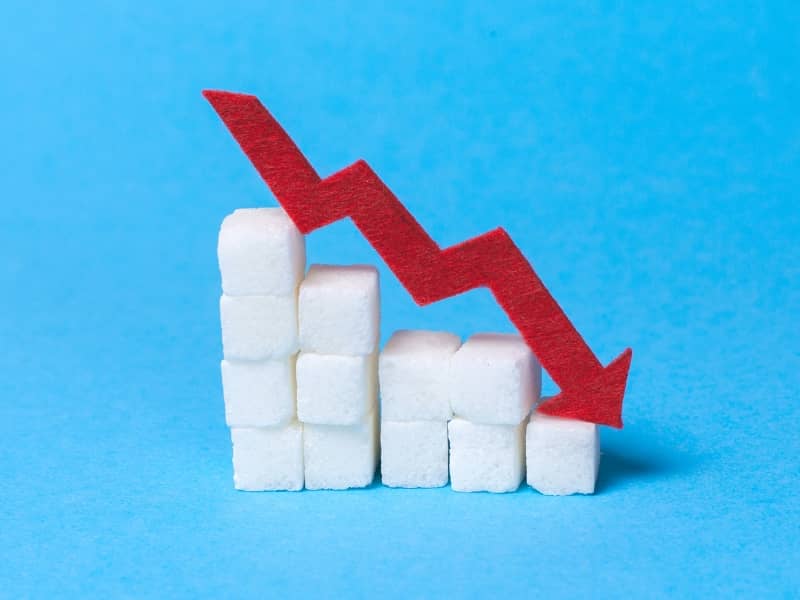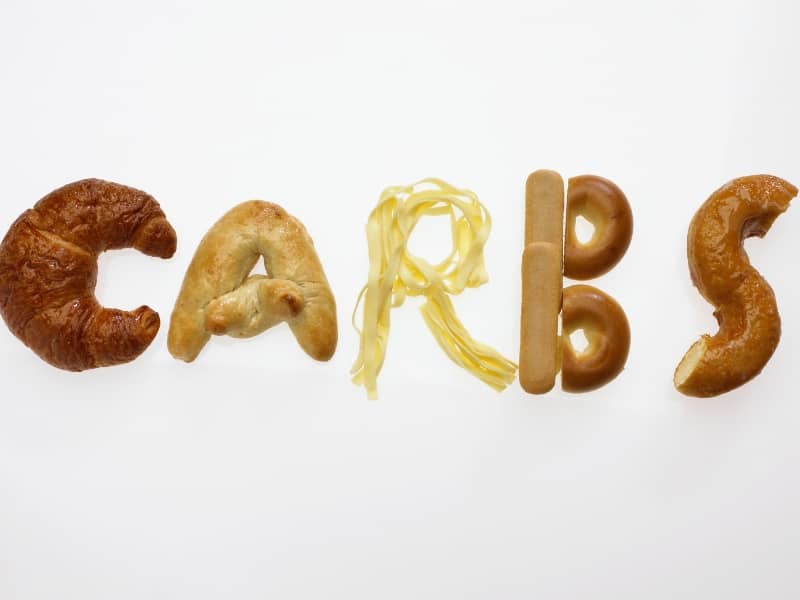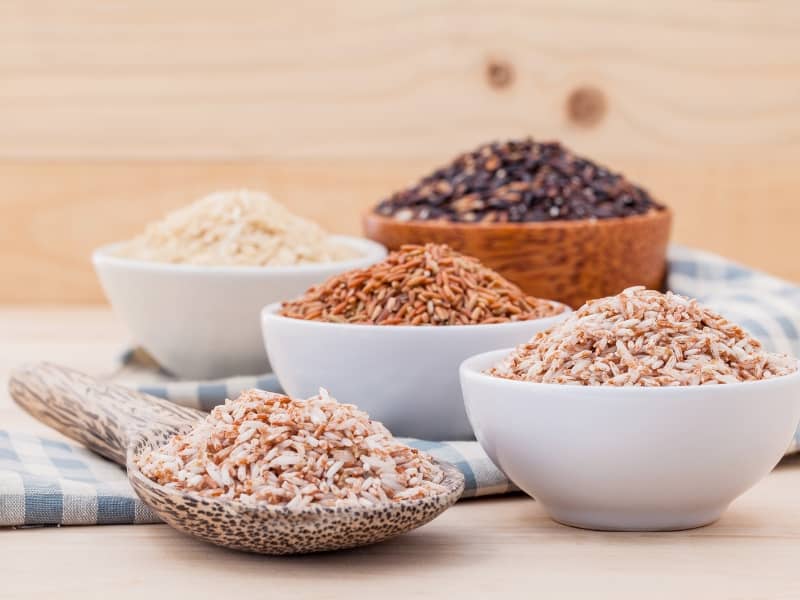Many people believe that cutting carbs helps with weight loss. You may wonder whether this method is effective for achieving your goals. In this guide, we’ll look at how cutting carbs can help. We’ll cover the science behind it and offer practical tips for using this strategy. Plus, we’ll ensure you stay healthy while doing it. Knowing the ups and downs helps you make wise choices for your lifestyle and weight loss journey.

Table of Contents
- I. The Science of Carbohydrates and Weight Loss
- II. The Transformative Power of Reducing Carbs
- III. The Psychological Impact of Carbohydrate Restriction
- IV. Evaluating Long-Term Effectiveness: Pros and Cons
- V. Practical Strategies for Cutting Carbs Successfully
- Cutting Out Carbs for Effective and Balanced Weight Loss
- FAQ
Key Takeaways:
-
Cutting carbs can help you lose weight at first. This happens because you eat fewer calories and lose water weight.
-
Low-carb diets might not work for everyone in the long run. This can lead to weight gain once you return to a regular diet.
-
Balancing carbs with protein and healthy fats helps with weight loss. It also gives you important nutrients.
-
Responses to low-carb diets can differ a lot. So, it’s key to pick a method that matches your personal preferences and lifestyle.
-
It’s best to talk to a healthcare professional before making big dietary changes. This ensures that you meet your health and nutrition needs.
I. The Science of Carbohydrates and Weight Loss
Understanding carbohydrates is key to evaluating their role in weight loss. These macronutrients are a main energy source. They fuel your daily activities and support your body functions. The type and amount of carbs you eat can have a large impact on weight management. Understanding simple and complex carbohydrates helps you see how they impact your body. This knowledge helps you build a diet that boosts weight loss and keeps your energy up.
1.1. Metabolism: How Carbs Affect Energy Levels

Your metabolism relies heavily on carbohydrates for energy. When you consume carbs, your body breaks them down into glucose, which serves as fuel for cells. Insufficient carbohydrate intake can lead to lower energy levels and decreased metabolic efficiency. Keeping up your carb intake helps your body stay energized. This supports your daily activities and workouts. In turn, it helps with weight management.
1.2. Glycemic Index: The Role of Carb Quality in Satiety
The glycemic index (GI) helps you see how carbs impact your blood sugar and hunger. Low-GI foods release glucose at a gradual pace, which helps you feel full and reduces cravings. High-GI foods can cause fast spikes in blood sugar. This leads to crashes that make you feel hungry again soon after. Choosing low-GI foods helps you feel full. This makes it easier to manage your calorie intake.
Incorporating low-GI foods into your diet can provide much support for weight loss. Foods such as whole grains, legumes, and many fruits have a low glycemic index. They also help you feel full for a longer time. High-GI processed foods, such as white bread and sugary snacks, can lead to sudden hunger. This may lead to overeating. Focusing on low-GI carbohydrates helps you control your appetite. This supports weight loss and keeps your energy steady all day.
II. The Transformative Power of Reducing Carbs
Cutting back on carbs can bring big changes to your body and health. Sticking to this diet can increase your energy, clear your mind, and help you lose fat. Switching from high-carb foods to low-carb options can help you lose weight. Plus, you might feel more satisfied with your meals. This change often means finding new recipes and food pairings. They can meet your dietary goals and also taste great.
2.1. Transitioning to a Low-Carb Lifestyle: What to Expect

As you begin a low-carb lifestyle, your body will go through a change period. You might feel withdrawal symptoms from sugar and refined carbs at first. These can include fatigue, irritability, and cravings. As your body adjusts, those negative feelings usually fade. This change brings more energy and less hunger. It’s vital to stay hydrated and maintain electrolyte balance to ease this transition.
2.2. The Metabolic Shift: From Glucose to Ketones
Switching to a low-carb diet starts a change in your metabolism. Your body will begin using fat for energy instead of glucose. Ketosis is the process in which your liver turns fat into ketones. These ketones give energy to your cells. As a result, you might notice improved fat oxidation and enhanced fat loss over time. Engaging in regular exercise now can help you burn more fat and achieve better results.
During this metabolic shift, your hunger signals may change. This often leads to a natural decrease in calorie intake. Research shows that people on low-carb diets often feel fuller after eating. This can help with weight loss and reduce cravings. After about a week, your body gets used to burning fat and ketones for energy. Then, you may notice clearer thinking, increased energy, and fewer cravings for snacks. This makes weight loss not only possible but lasting.
III. The Psychological Impact of Carbohydrate Restriction

Focusing on carbohydrate reduction can reshape your psychological landscape in a significant way. As you lower your carb intake, you may feel mood swings, irritability, or anxiety. These changes often happen because of shifts in your blood sugar levels. Research shows that strict diets can create a guilt-and-reward cycle around food. This can make feelings of hunger and cravings even harder to handle. Knowing these mental shifts can help you set realistic expectations. This can lead to a healthier relationship with food during your weight loss journey.
Ketogenic Benefits & Easy Instant Pot Keto>>>
3.1. Cravings and Mindset: Overcoming Mental Barriers
You may feel strong cravings, especially when you first cut carbs. This challenge often stems from both physiological withdrawal symptoms and ingrained behavioral patterns. Maintaining a positive mindset is vital for overcoming these hurdles. Mindfulness practices and tasty low-carb options can help you stay on track. They can also change how you view your food choices.

Living low-carb can be hard, especially at social events where food is the focus. Friends and family might not get your dietary choices. This can create awkward moments or tempt you to stray from your plan. Discussing your diet needs early or bringing a low-carb dish can ease tension. Sharing your choices with confidence helps you focus on socializing. This way, you won’t feel out of place. It empowers you to enjoy events while staying true to your goals.
Social situations often include shared meals. If you avoid carbs, it can feel lonely. Think of your choice not as a limit, but as a promise to your health and well-being. Sharing your dietary goals with loved ones can help them understand and support you. This way, challenges can become chances for bonding. To enjoy outings more, plan ahead. Bring low-carb snacks or suggest restaurants that offer options suitable for a diet. As your friends and family notice your success, they might try low-carb options too. This can enhance your social interactions and strengthen your commitment.
IV. Evaluating Long-Term Effectiveness: Pros and Cons
| Pros | Cons |
|---|---|
| Rapid initial weight loss | May lead to nutrient deficiencies |
| Improved insulin sensitivity | Potential for muscle loss |
| Reduced appetite | Can be hard to maintain long-term |
| Lower triglyceride levels | Risk of yo-yo dieting |
| Increased HDL cholesterol | Social and dining challenges |
| Possibly reduced cravings | May promote unhealthy eating patterns |
| Support for metabolic health | May lead to gastrointestinal issues |
| Improved focus and cognition | Can be socially isolating |
| Potential for lower blood pressure | May require supplementation |
| Helps in managing certain health conditions | Increased risk of emotional eating |
4.1. Health Benefits Beyond Weight Loss
Cutting out carbs may offer unexpected health benefits that extend beyond weight loss. Many people feel more energetic and clear-headed soon after cutting carbs. Carbohydrates affect blood sugar levels. Lowering them can help stabilize your mood and stop hunger spikes. Your body may burn fat better. This can boost your metabolism and improve health markers. You might see lower cholesterol and blood pressure levels.
4.2. Potential Risks and Dietary Balance

Cutting down on carbs has benefits, but it can also pose risks if your diet isn’t balanced. Limiting carbs can cause nutrient deficiencies. This happens if you don’t eat a variety of foods. You need lean proteins and healthy fats. But don’t forget fiber and nutrients from whole grains, fruits, and vegetables. Daily functions may suffer when your diet lacks this balance. Long-term carb restriction can affect bone health and energy levels. So, a balanced approach is important for lasting well-being.
V. Practical Strategies for Cutting Carbs Successfully
To cut carbs from your diet, use practical strategies. They can provide significant help. Start by swapping out high-carb foods for healthier, low-carb alternatives. Increase your protein and healthy fats to feel full. Also, keep an eye on your portion sizes. Reducing carb intake in gradual steps can make it easier to adhere to a plan over time. Planning meals and snacks in advance helps you stay on track. This way, you can achieve your dietary goals with minimal effort.
5.1. Meal Planning Tips for a Low-Carb Diet
Meal planning is key to sticking to a low-carb diet and not feeling deprived. Start by finding low-carb recipes you like. Examples include cauliflower rice stir-fry and zucchini noodles with pesto. Create a weekly menu, ensuring you include a variety of proteins, veggies, and healthy fats to keep your meals interesting. Try meal prepping. It saves time and helps you avoid high-carb snacks.
-
Make a grocery list of low-carb staples.
-
Prepare meals in advance to avoid last-minute choices.
-
Experiment with new recipes every week to maintain engagement.
-
Use leftovers in a way that reduces waste.
The key is to have a strategy that fits your lifestyle and tastes. Focus on wholesome, low-carb foods.
5.2. Smart Snacking: Choosing Nutrient-Dense Options

Choose snacks that are satisfying and nutritious to boost your low-carb journey. Choose foods like nuts, seeds, cheese, or Greek yogurt. They offer healthy fats and protein but keep carbs low. Have ready-to-eat snacks available. You can keep sliced raw veggies with hummus or guacamole. Hard-boiled eggs also make a quick protein boost. Choosing nutrient-dense snacks helps you lose weight. They also keep your energy steady.
Nutrient-dense snacks are key for your low-carb lifestyle. They offer important vitamins and minerals that you might miss on a low-carb diet. A handful of almonds has healthy fats, protein, and magnesium. This makes them a great choice. Select options that help curb cravings while filling you with energy. Choosing low-carb, nutrient-rich snacks keeps you full and healthy. This helps you avoid unhealthy high-carb options when hunger strikes.
Cutting Out Carbs for Effective and Balanced Weight Loss
Cutting carbs can help some people lose weight. It may lower calorie intake and boost fat burning. It’s important to have a balanced diet. Include healthy carbs, protein, and fats. This way, you can meet your nutritional needs. Before starting a low-carb diet, test your lifestyle, preferences, and health goals. Also, think about talking to a healthcare professional for personalized advice. Finding a sustainable eating pattern that works for you is key to long-term success.
FAQ
Q: What are the benefits of cutting out carbs for weight loss?
Cutting out carbs can lead to weight loss for several reasons. When you cut back on carbs, your body stops using glucose for energy. Instead, it uses fat, which helps burn fat. Low-carb diets can lower insulin levels. This helps the body use fat stores for energy. Many people notice that cutting carbs lowers their calorie intake. Foods high in carbs are often calorie-dense. They also tend to be less filling than protein and fat.
Q: Can cutting carbs lead to negative side effects?
Yes, some people might have negative side effects when they cut carbs a lot. Common side effects can be fatigue, irritability, headaches, and digestive issues. This is often called the “keto flu” when starting a very low-carb diet. Be careful about nutrient balance. If you cut out carbs and don’t add other healthy foods, you might miss out on important vitamins, minerals, and fiber. This can harm your health.
Q: Is it sustainable to cut out carbs long-term?
For many people, completely eliminating carbs may not be sustainable in the long run. Many people find it hard to stick to a strict diet. It might help them lose weight in a short period, but maintaining it is tough. Adding back carbohydrates in a balanced way over time is more sustainable. Eat whole, unprocessed foods. Choose fruits, vegetables, and whole grains for a healthy diet.
Q: Are all carbohydrates bad for weight loss?
Not all carbohydrates are bad for weight loss. There are two main types: simple and complex. Simple carbs are in sugary foods and drinks. Eating too many can cause weight gain because they cause a rapid increase in blood sugar levels. Complex carbs like whole grains, legumes, fruits, and veggies pack in fiber, vitamins, and nutrients. They help with weight loss by keeping you full longer and stabilizing blood sugar levels. A balanced approach that incorporates healthy carbohydrates can be beneficial.
Q: How should I approach carb cutting for weight loss?
If you want to cut carbs for weight loss, first check your current diet. Look for areas you can improve. Focus on reducing refined and sugary carbohydrate sources while incorporating more whole foods. Reduce your carbohydrate intake in small increments. Make sure to keep your protein and healthy fats high. This helps you feel balanced and full. Check how your body responds. Also, talk to a healthcare or nutrition expert. This way, you can ensure your diet changes are safe and fit your needs.
Ketogenic Benefits & Easy Instant Pot Keto>>>
Last Updated on July 31, 2025 by Holistic Healths





